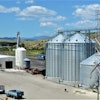
While it might be nice to make all sales on a cash basis, it may not always be the best business strategy. In fact, given recent instances of reported coin shortages due to COVID-19 pandemic-related causes, some retailers have even taken the extreme action of NOT accepting cash — only accepting credit cards.
There are pros and cons of accepting credit cards and offering credit (carrying customer credit on your books) that each company must go over before deciding whether to provide credit.
Credit cards
One of the easiest ways of offering credit to customers is to take credit cards as payment. Our society has gone increasingly “cashless.” The Pew Research Center reported in 2018 that 29% of adults make no cash purchases during a typical week. The same research found that only 53% of Americans say they try to make sure they always have cash on hand just in case they need it.
Credit cards do come with some inherent costs to your business. When a customer charges something, both the card issuer and the payment network receive a percentage of the sale. In 2007, interchange fees amounted to $42 billion or 2% of all sales.
If the customer feels dissatisfied with the product or service, you may be subject to a “chargeback.” A chargeback is initiated by a customer complaint to their credit card issuer and can happen up to six months after the purchase and requires the business to prove the purchase was legitimate.

So what are the benefits of accepting credit cards?
- Increase overall sales.Research by Intuit found that 83% of small businesses that accepted credit cards saw increased sales. Of those businesses, 52% increased sales by at least $1,000/month and 18% increased sales of at least $20,000/month.
- People spend more.Studies have shown that it’s easier to spend money with a credit card than cash. Credit cards also increase impulse purchases as consumers are not as tied to “what’s in their wallet.”
- Broaden your customer base.Offering the ability to pay via credit card may be attractive to consumers outside of your regular customer base.
- Increase cash flow.Using credit card payments means that you do not need to wait for checks to clear or wait for payment after sending a bill. Funds are deposited automatically and directly to your bank.
- Time is money.Credit card payments are more efficient and less time consuming, as the process is automated. Conceivably, this possibly means fewer trips to the bank, more periodic invoices to print and mail — and fewer bounced checks.
At least in the short term, taking credit cards will probably cost your business money and extra time spent processing transactions, according to the U.S. Small Business Administration. High-tech credit card terminals cost as much as $2,000 each, and you may have to lay out a security deposit of up to $10,000 to acquire a merchant account.
You can negotiate your interchange fees if you have a high sales volume each month. You can also accept credit cards and offer a discount if the customer pays in cash.
An issue somewhat related to the acceptance of credit cards is the acceptance of debit cards. A debit card allows customers to pay for their purchases using cards directly linked to their checking or savings account.
Typically, the same unit that enables you to accept a credit card will allow accepting a debit card. Like credit cards, debit card transactions carry associated processing fees. Like the previous discussion, you will need to analyze the costs/benefits of providing this service.
Offering credit
Many in society look to banks to provide various financial services. Among these services are offering savings accounts and certificates of deposit, which gives the source of funds to offer out as loans. Perhaps a more significant decision than offering to accept credit cards is offering your customers actual credit — serving as a “bank” for them. In this case, you decide to provide this service for your customers with the anticipation that it will maintain or increase sales of your products (feed, seed, fertilizer, etc.). Accordingly, you will need to act like a bank to qualify them to receive credit — to “carry their account.” Items to consider before offering this service:
- Credit application.A credit application is an integral part of extending credit to a customer. It needs to include information such as the amount or “line” of credit being requested; personal information of the applicant; the financial status of the applicant; names of credit references; the applicant’s bank information; and the applicant’s agreement to the specified terms. You should clarify all of these with your banking partner and your lawyer.
- Interest charged and terms.Most terms are relatively standard , but you will need to determine the interest you will charge on customers whose credit you carry. If you can afford to have accounts receivable, you may decide to charge a competitive interest rate. You can also set your rate higher than local lenders however, in essence trying to force them to seek financing elsewhere.
- Possible negative impact on cash flow.When a business begins selling to customers on credit, its cash flow is affected immediately. As an example, if your feed and grain firm offers credit terms for 30 days, the cash you would receive during this time does not flow into your business. As a result, you will not have this cash to pay your employees, suppliers and other bills.
- Need to fund accounts receivable.Related to the cash flow issue described above, you must calculate the increase in these accounts receivable and determine how to finance this increase. You may need to seek a credit line from your bank or ask your suppliers for extended credit.
- Keeping up with accounts receivable.Unfortunately, not all customers pay on time, which means someone in your accounting/billing department will need to make calls, send out e-mails or contact clients for past due notices.
- Potential bad debt loss.Related to our first point, even if you do all of your “due diligence” – there are always some customers who don’t pay. When this happens, your options include turning the account over to a collection agency — or failing all else — writing the receivable off as a bad debt.
提供信用接受信用卡或携带ing customers’ accounts are decisions worth considering, as they can assist in increasing your sales. Like most other management decisions involving your feed and grain business, they have both benefits and associated costs. ■
Authors
Dr. John Foltzis Chair, Department of Animal Sciences, The Ohio State University, Columbus, OH, and Dean Emeritus, College of Agricultural and Life Sciences and Professor Emeritus, University of Idaho, Moscow, ID.
Dr. Christine Wilsonis Associate Dean, College of Agriculture and Professor, Department of Agricultural Economics, Purdue University.





















